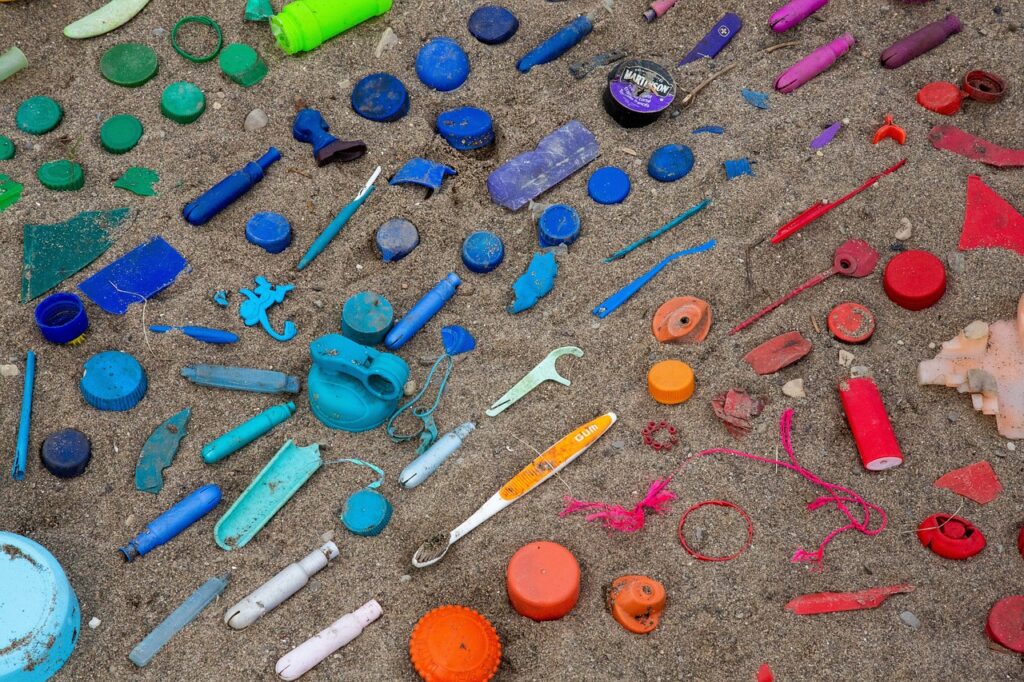
[ad_1]
 By John Anderer
By John Anderer
The nice Pacific rubbish patch, a big floating island of trash spanning an space twice the scale of the state of Texas, is apparent to see. Now, new worldwide analysis stories there’s a lot, far more trash residing under the ocean’s floor. CSIRO, Australia’s nationwide science company, and researchers from the College of Toronto in Canada estimate there are as much as 11 million tonnes of plastic air pollution on the ocean ground.
Nonetheless not involved? Each single minute, a rubbish truck’s price of plastic enters the ocean. With the usage of plastic predicted to double by 2040, greedy exactly how and the place all that plastic travels after being thrown away is essential to defending marine ecosystems and wildlife. Dr. Denise Hardesty, Senior Analysis Scientist with CSIRO, explains that is the primary ever estimate of how a lot plastic waste finally ends up on the ocean ground particularly, the place it accumulates earlier than finally breaking down into smaller items and mixing into ocean sediment.
“We all know that tens of millions of tonnes of plastic waste enter our oceans yearly however what we didn’t know is how a lot of this air pollution finally ends up on our ocean ground,” Dr. Hardesty says in a press release. “We found that the ocean ground has grow to be a resting place, or reservoir, for most moldable air pollution, with between 3 to 11 million tonnes of plastic estimated to be sinking to the ocean ground.”
“Whereas there was a earlier estimate of microplastics on the seafloor, this analysis appears at bigger objects, from nets and cups to plastic baggage and every thing in between,” Hardesty continues.
Alice Zhu, a PhD Candidate from the College of Toronto who led the examine, provides that in keeping with the newest estimates, the quantity of plastic air pollution on the ocean ground could possibly be as much as 100 occasions extra than the degrees of plastic discovered floating on the ocean’s floor.
Pure Blaze is Google-Free — We Want Your Help
Contribute Simply $1 Per Month at Patreon to Assist the Reason for Well being Freedom
“The ocean floor is a brief resting place of plastic so it’s anticipated that if we are able to cease plastic coming into our oceans, the quantity could be diminished,” Zhu says. “Nevertheless, our analysis discovered that plastic will proceed to finish up within the deep ocean, which turns into a everlasting resting place or sink for marine plastic air pollution.”
Researchers utilized a set of scientific information to assemble two predictive fashions for estimating each the quantity and distribution of plastic on the ocean ground; one mannequin got here through information collected by remote-operated autos (ROVs), whereas the opposite used information from backside trawls. Utilizing the ROV information, examine authors estimated three to 11 million metric tonnes of plastic air pollution resides on the ground of the ocean.
The ROV outcomes additionally revealed mass clusters of plastic round continents; roughly half (46%) of the anticipated plastic mass on the worldwide ocean ground resides above 200 m depth. Deeper areas of the ocean, from 200 meters to as deep as 11,000 meters, include the rest of the anticipated plastic mass (54%).
Whereas inland and coastal seas cowl a lot much less floor space than oceans (11% vs 56% out of your entire Earth’s space), researchers estimate these areas maintain as a lot plastic mass as the remainder of the ocean ground.
“These findings assist to fill a longstanding information hole on the habits of plastic within the marine setting,” Zhu concludes. “Understanding the driving forces behind the transport and accumulation of plastic within the deep ocean will assist to tell supply discount and environmental remediation efforts, thereby lowering the dangers that plastic air pollution could pose to marine life.”
The examine is revealed in Deep Sea Analysis Half I Oceanographic Analysis Papers.
Supply: Research Finds
Born blue within the face, John has been writing professionally for over a decade and masking the newest scientific analysis for StudyFinds since 2019. His work has been featured by Enterprise Insider, Eat This Not That!, MSN, Ladders, and Yahoo!
Research and abstracts could be complicated and awkwardly worded. He prides himself on making such content material simple to learn, perceive, and apply to 1’s on a regular basis life.
Picture: Pixabay
[ad_2]